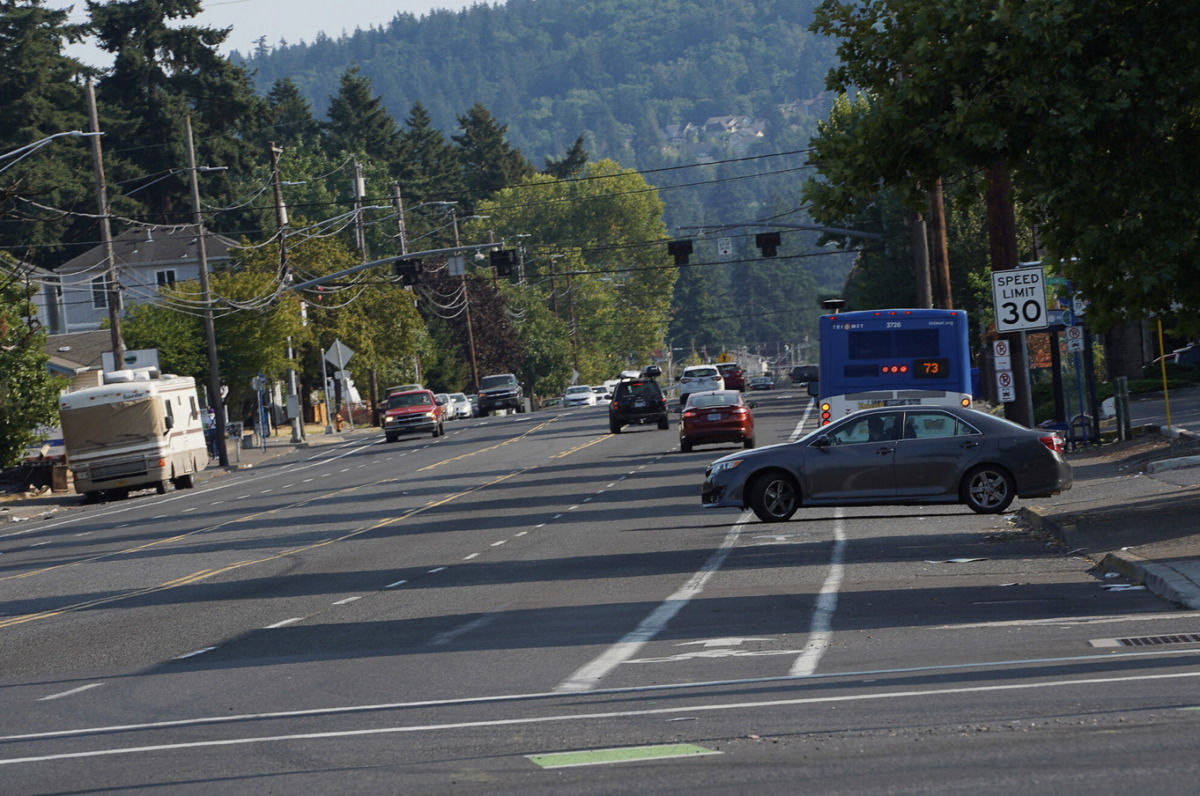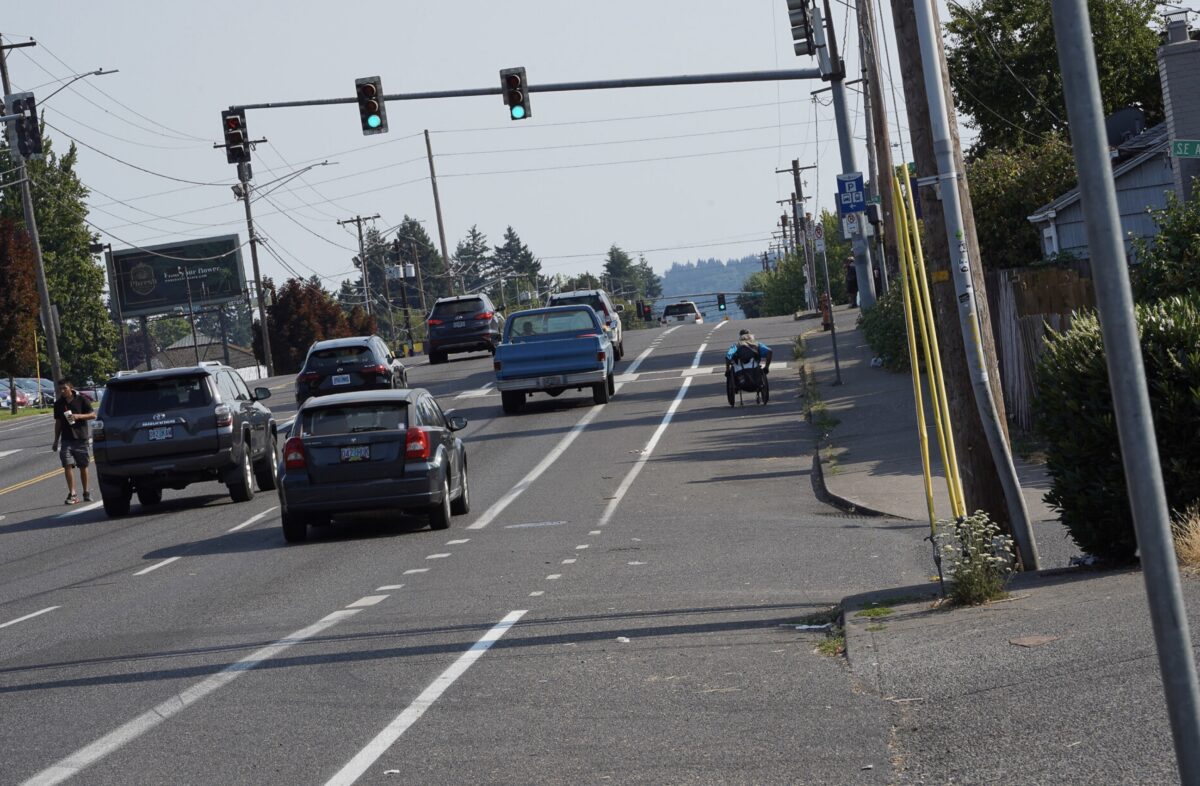
The Portland Bureau of Transportation is working on a plan to give east Portland’s 122nd Avenue a makeover, and it now has feedback from community members about what they think should be prioritized. Topping the list is a redesigned 122nd and East Burnside intersection and more trees to provide some shade.
On the 6.5 mile section between NE Marine Drive and SE Foster Road, 122nd Avenue is one of Portland’s most dangerous streets. Someone walking, biking or taking the bus on 122nd will notice there are stretches of the wide multi-lane arterial without sidewalks, and many that do exist are narrow, deteriorated and/or impeded by utility poles and bus stops. There is a lack of streetlight coverage, making people particularly vulnerable at night. And 122nd’s bike lanes are very narrow, unprotected from car traffic and drop off to become shared turn lanes with cars.
These are just some of the issues highlighted in our video back in September.
Advertisement
In September, PBOT released an online open house to seek final community input before drafting the 122nd Ave Plan. The open house was live more a month and a half, and more than 330 people participated. PBOT recently released a summary of information about the they received about the project, giving us an idea of what we can expect to see prioritized in the plan.

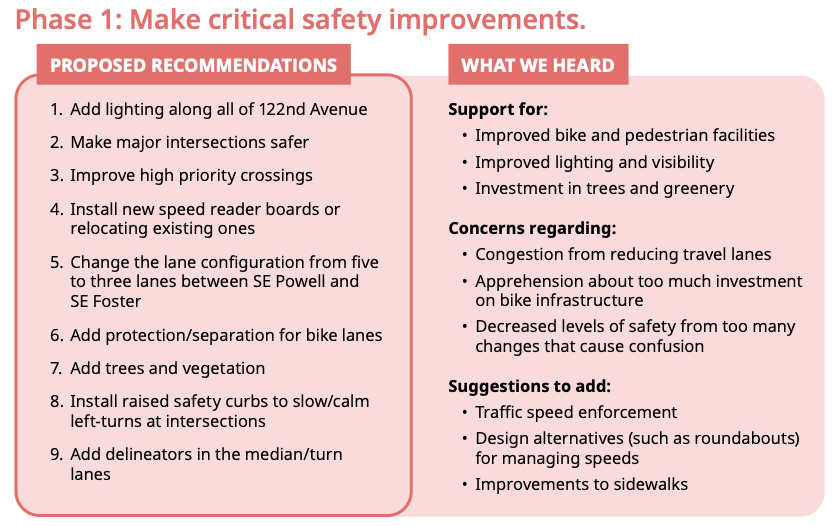
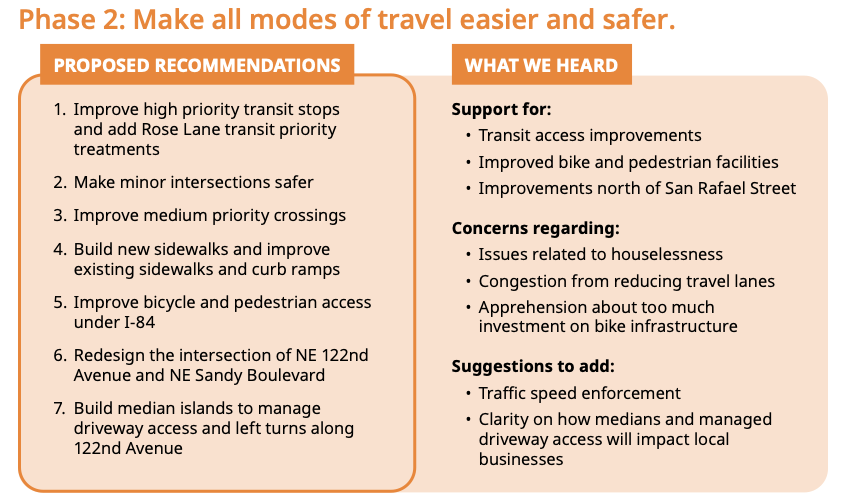
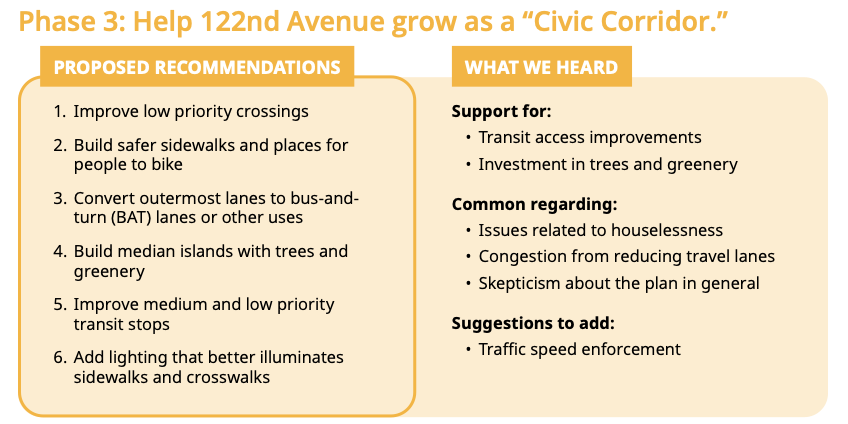

According to the summary, people support intersection redesigns, improved bike and pedestrian facilities, transit access improvements, improved lighting, and investment in trees and greenery. People are most concerned about congestion relating to any reduction in space for driving and some are apprehensive about “too much” investment in bike infrastructure. Other people in the community have also suggested more traffic speed enforcement.
E Burnside Street was the top intersection survey respondents said they wanted redesigned to improve safety and predictability of movement, followed by NE Halsey St, NE Glisan St, SE Powell Blvd and NE Fremont St (see chart above). According to PBOT, these safety improvements could be made in different ways (see below).
One potential is to keep the existing number of standard lanes, but narrow them to allow for an expanded bike lane along the curb, and make it so cars can’t turn right across the bike lane on a red light. A more sweeping redesign might involve removing the exclusive right-turn lane for a completely protected intersection for people biking, and a shorter crossing distance for people walking across the street.


An area where PBOT is considering making significant changes is between SE Foster Road and SE Powell Blvd, where they want to reduce standard thru-lanes from two in each direction to one, which would open up space for a center median and safer crossings, bike lanes and transit stops.
About 40% of respondents said they wanted a design that provided the most protection for people biking and walking.
Although PBOT says traffic analysis shows this lane reduction wouldn’t result in a significant increase in traffic congestion, they said feedback on this topic showed a “tension between those wanting more separation and those wanting to preserve traffic lanes and along the corridor.” About 40% of respondents said they wanted a design that provided the most protection for people biking and walking, but some people were concerned this extra protection would lead to increased travel times for people driving cars.
One thing that’s not up for debate? Community members want increased plant and tree coverage. PBOT says the investment in greenery is something that was most pressing for many people who responded to the survey. As the June 2021 heat wave made very clear, areas in Portland with the least amount of tree canopy coverage and widest roads experienced the hottest temperatures. According to PBOT, some neighborhoods near 122nd Ave experienced the highest number of deaths during this heat wave.
“One of the reasons it sucks to walk in east Portland is we have no large trees on the arterials and the concrete creates a heat island. We really need more vegetation,” one person wrote in the project survey.
122nd Ave is located in an area where there are higher concentrations of communities of color and low-income people. People of color and lower-income people are overrepresented in traffic fatalities. In order to achieve a just transportation system where everyone has the freedom of mobility, it’s vital to make it safe to travel on streets like 122nd Ave.
PBOT says they will release a draft of the 122nd Ave Plan using this community input later this year, after which point there will be another public comment period. You can find the full fall 2021 survey summary here, and stay tuned for more information about what we hope will be a boon to safety in east Portland.
